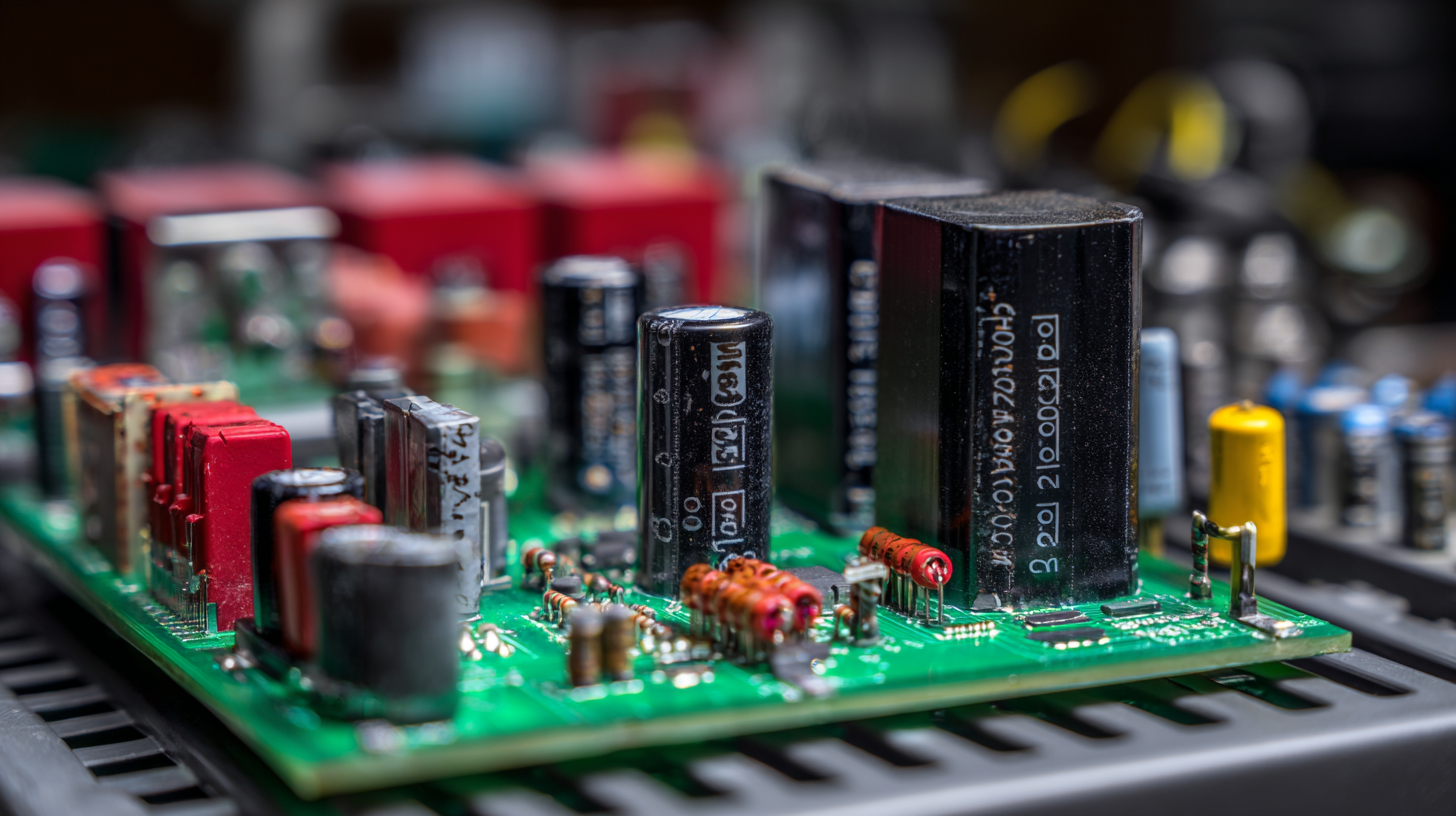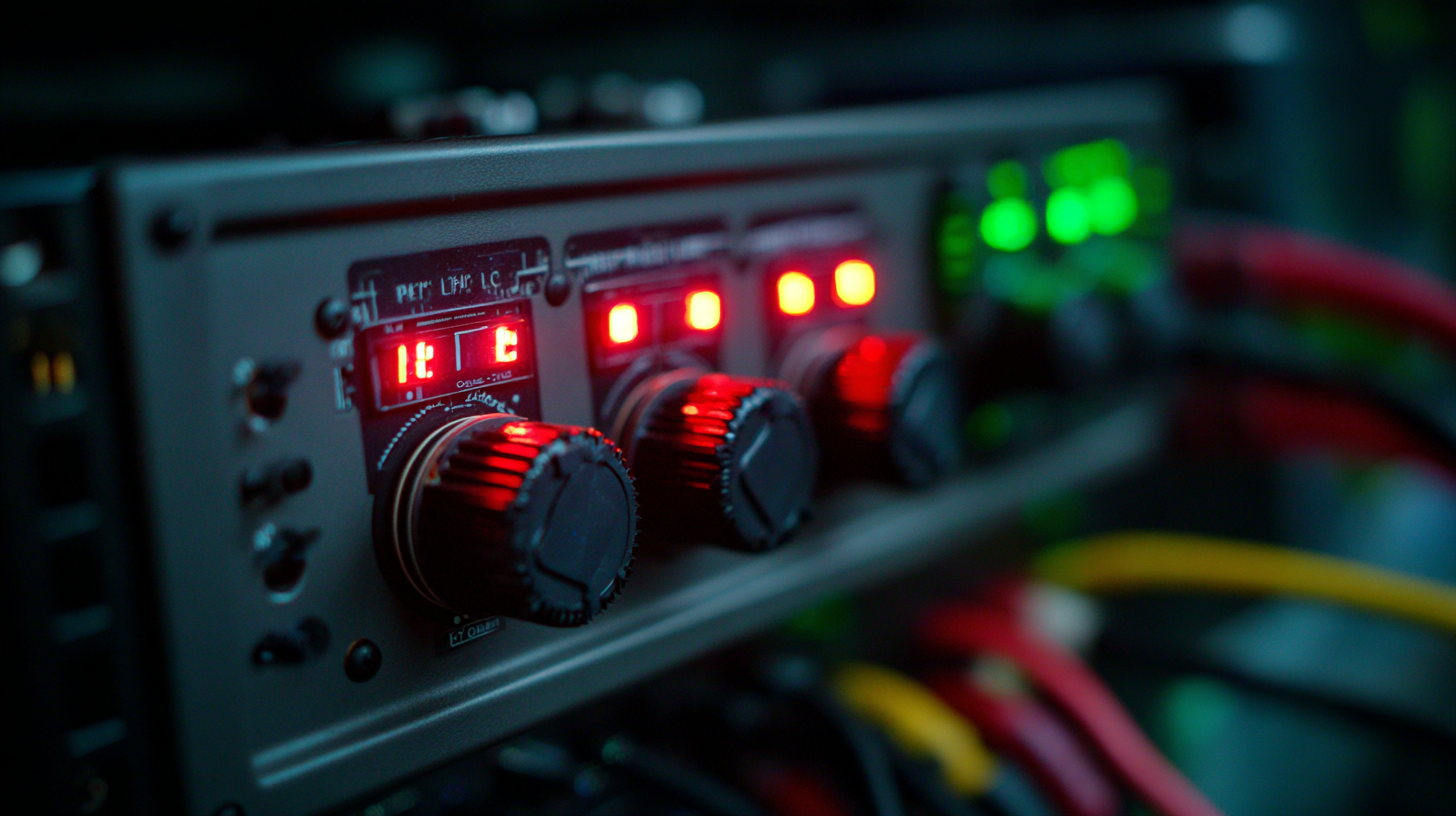Blog
Understanding the Advantages of Choosing the Best Dc Power Supply for Your Needs
In today's rapidly evolving technological landscape, selecting the right DC power supply is paramount for both industrial and consumer applications. According to a recent report from MarketsandMarkets, the global DC power supply market is projected to reach $3.9 billion by 2026, reflecting a robust CAGR of 6.5% from 2021 to 2026. This growth underscores the increasing reliance on efficient power solutions in sectors ranging from telecommunications to renewable energy. Choosing the best DC power supply not only enhances performance but also ensures energy efficiency and reliability, ultimately leading to reduced operational costs. As the demand for high-quality and reliable power sources continues to escalate, understanding how to identify top-notch suppliers becomes crucial for businesses aiming to optimize their operations and integrate advanced technologies seamlessly.

Benefits of Selecting the Right DC Power Supply for Your Applications
Choosing the right DC power supply is crucial for various applications, as it directly impacts efficiency, reliability, and overall system performance. According to a report from Research and Markets, the global DC-DC converter market is expected to grow significantly, projected to reach USD 19.2 billion by 2025, driven by the increasing demand for efficient energy solutions in automation and telecommunications. The right power supply ensures that devices operate under optimal conditions, leading to improved functionality and reduced failure rates.
In applications ranging from mobile devices to industrial machinery, selecting the correct DC power supply can enhance energy efficiency by up to 25%, as noted in a study published by the IEEE. High-quality power supplies reduce waste heat and extend the lifespan of components, which is essential in industries where downtime is costly. Additionally, utilizing a power supply designed for specific needs minimizes power loss, ensuring that the maximum energy is delivered to the load. As technology continues to evolve, investing in a suitable DC power supply becomes increasingly critical for achieving operational excellence.

Key Factors to Consider When Choosing a DC Power Supply
When selecting a DC power supply, it is crucial to consider several key factors that can significantly impact performance and efficiency. One of the primary considerations is the output voltage and current requirements specific to your application. According to a report by MarketsandMarkets, the global DC power supply market is projected to reach $3.05 billion by 2026, driven in part by increasing demand in various sectors, including telecommunications and renewable energy systems. Accurately identifying the voltage and current needed will ensure optimal device operation and longevity.
Another essential factor is the power supply’s efficiency, which is influenced by its design and components. Efficiency ratings can vary widely, with high-quality models exceeding 90% efficiency, as highlighted in a recent analysis from TechSci Research. Higher efficiency not only leads to lower energy costs but also reduces heat generation, thereby enhancing reliability and overall lifespan. Additionally, consider features such as over-voltage protection, thermal management, and load regulation to match your operational standards. These attributes not only contribute to the unit's performance but also serve to safeguard your equipment and minimize operational risks.
Types of DC Power Supplies and Their Unique Advantages
When it comes to selecting a DC power supply, understanding the various types available and their unique advantages is crucial for making an informed decision. There are primarily three categories of DC power supplies: linear, switching, and programmable. Linear power supplies are known for their low noise and stable output, making them ideal for sensitive applications like audio equipment. According to a recent report by the Power Electronics Research Group, linear supplies account for approximately 25% of the market share in high-fidelity applications, highlighting their continued relevance.

Switching power supplies have gained popularity due to their efficiency and compact size. They can convert one voltage level to another through high-frequency operation, achieving power efficiency rates of over 90%. This capability makes them suitable for a wide range of products, from consumer electronics to industrial machinery. Particularly in the mobile industry, where space is at a premium, switching supplies are favored, constituting about 60% of the total DC power supply market, as noted in a study by MarketWatch.
Tips: When choosing a DC power supply, consider the output voltage requirements of your application to ensure compatibility. Additionally, evaluating factors such as thermal management and load regulation can help you select a power supply that meets your specific needs efficiently. If precision is key to your project, look into programmable power supplies, which allow for adjustable output settings and monitoring.
How a Quality DC Power Supply Enhances Efficiency and Reliability
When it comes to powering electronic devices, the efficiency and reliability of your power supply are critical factors that directly impact performance. According to a report by the International Energy Agency (IEA), switching to a high-quality DC power supply can improve energy efficiency by up to 30%, which is especially important in industrial applications where energy costs are a major concern. A quality DC power supply minimizes energy loss through heat and voltage fluctuations, allowing systems to operate at optimal performance levels.
Moreover, reliability is a key component in the longevity of your equipment. The 2022 Power Supply Reliability Report highlighted that devices powered by superior quality supplies experience roughly 50% fewer failures than those powered by lower-grade options. This reliability translates not only to reduced downtime but also to lower maintenance costs over time. Investing in a quality DC power supply, therefore, not only enhances system efficiency but also ensures that your operations run smoothly, supporting both short-term objectives and long-term goals.
Understanding the Advantages of Choosing the Best DC Power Supply for Your Needs
| Parameter | Description | Importance | Impact on Efficiency | Impact on Reliability |
|---|---|---|---|---|
| Output Voltage Range | The range of output voltages the supply can provide. | High | Allows adaptability to various applications. | Ensures proper voltage for connected devices. |
| Current Rating | Maximum output current the supply can deliver. | High | Ensures sufficient power over prolonged usage. | Prevents overheating and potential failure. |
| Efficiency Rating | Percentage of input power converted to output power. | Critical | Reduces energy loss during operation. | Less heat generation increases lifespan. |
| Short Circuit Protection | Feature that protects the supply in case of a short. | High | Prevents damage to the power supply. | Increases overall system reliability. |
| Load Regulation | Ability to maintain stable output voltage under load changes. | Medium | Ensures consistent performance during operation. | Enhances stability of connected devices. |
Common Misconceptions About DC Power Supplies You Should Know
When selecting a DC power supply, many users often harbor misconceptions that can lead to suboptimal performance and inefficiencies. One common belief is that all power supplies are essentially interchangeable. However, research by the International Electrotechnical Commission (IEC) shows that variations in output voltage, current capacity, and regulation can significantly affect the stability and reliability of electronic systems. Using a power supply that doesn't meet specific voltage and current specifications can compromise device performance or, worse, even lead to permanent damage.
Another widespread myth is that higher price always equates to better quality in DC power supplies. A recent report from Market Research Future (MRFR) highlights that while premium brands may offer advanced features, many mid-range options provide similar reliability and performance at a fraction of the cost. The key is to assess the power supply based on features such as efficiency ratings, load regulation, and thermal performance rather than just the price tag. Educating oneself about these factors can greatly enhance decision-making and ensure that users select a power supply that genuinely meets their requirements.
